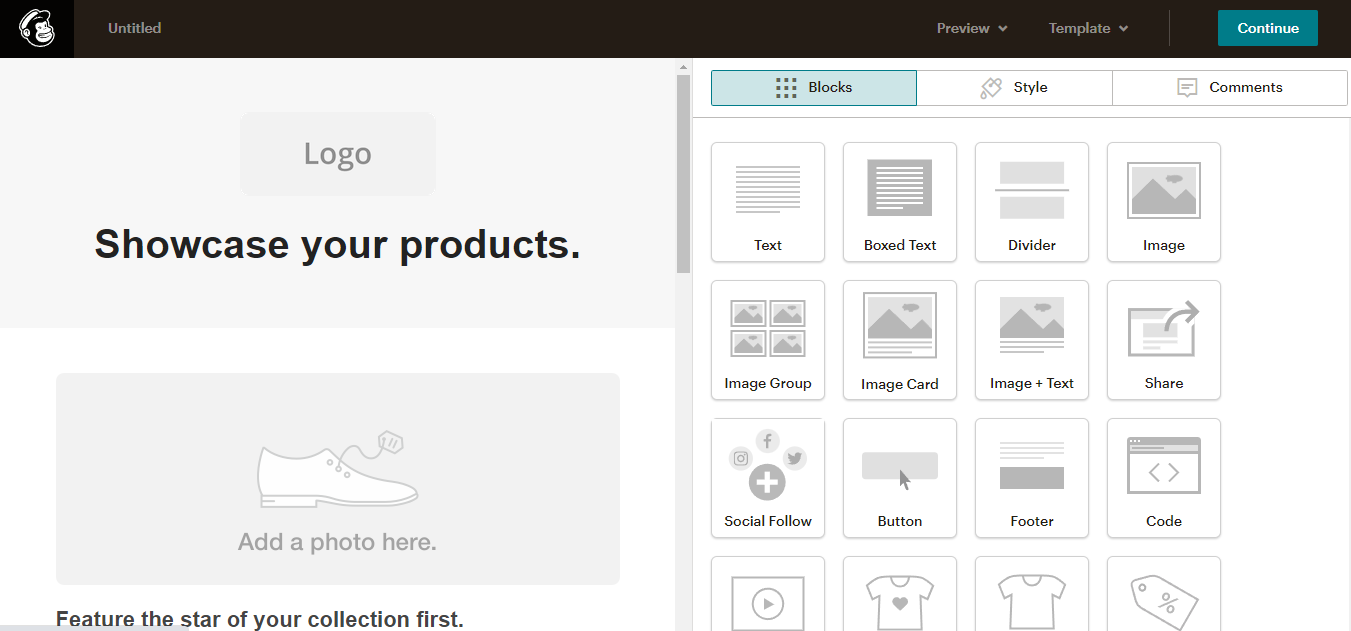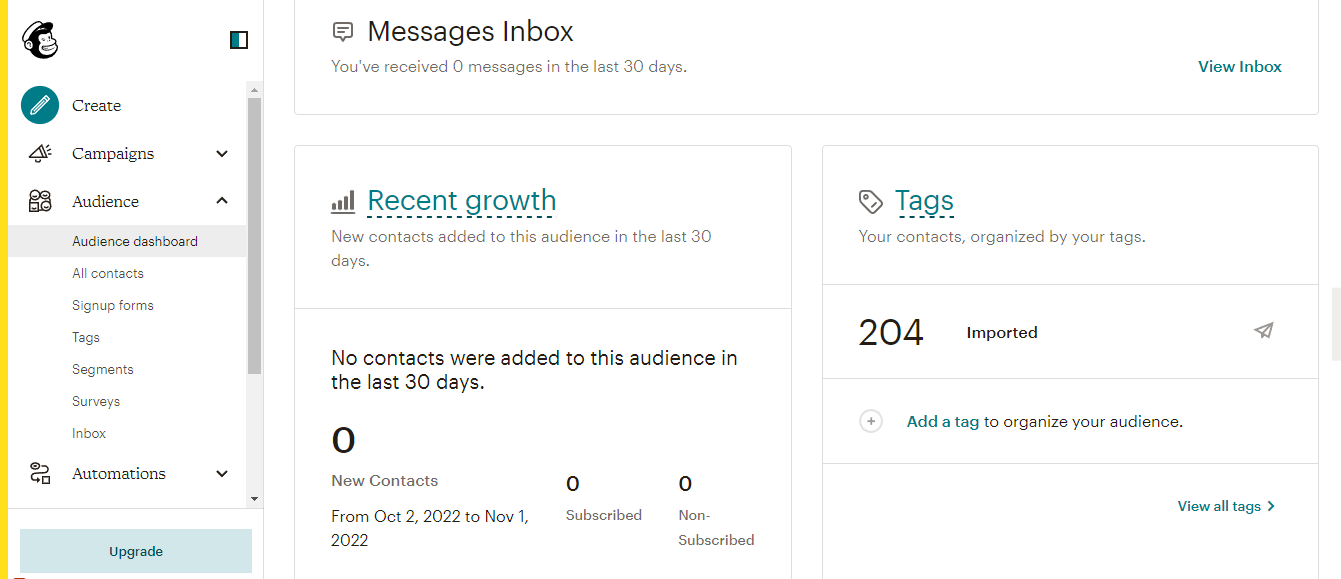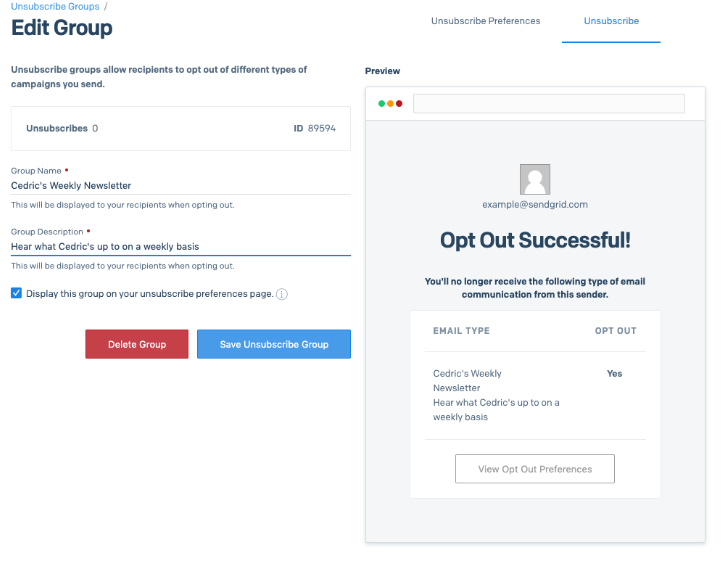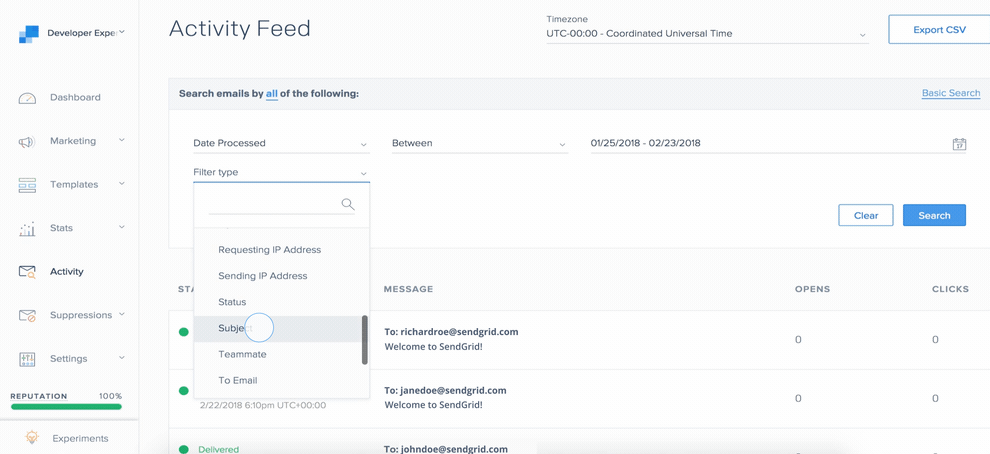MailChimp vs SendGrid: 2025 Features Comparison
Email marketing software compared

Email marketing software is one of the most vital tools you can get for your brand. They enable you to craft professional messages and deliver them to as many email addresses on your subscriber list with the click of a button. Without one, you’ll find it virtually impossible to run an effective email marketing campaign.
There are many examples of email marketing software, and two well-known ones are MailChimp and SendGrid. These are the biggest in the market, each with tens of thousands of paying users.
We want to see how MailChimp fares against SendGrid. We’ll judge each platform based on critical factors like features, pricing, performance, and customer support. After reading this review, you can see our previous MailChimp review for more information about the platform.

Features
MailChimp is a web-based, software-as-a-service platform that lets you send email campaigns to as many addresses on your email list. Creating effective email marketing messages can be tough, so MailChimp offers a collection of templates to help users. You can select any template and customize it to match your tastes, or if you have good design skills, you can use MailChimp’s drag-and-drop editor to create your email template from scratch.
MailChimp provides tools to help you manage and grow your email list. For instance, you can create subscription forms and embed them on your website, and any email address inputted on that form will be automatically added to your subscriber list. If you have an existing subscriber list, you can import it as a CSV file and continue sending messages to the list via MailChimp as you did before.
Just like MailChimp, SendGrid provides a collection of email templates that you can edit to fit your tastes. From our experience, SendGrid’s templates tend to be more responsive than MailChimp’s. The platform also lets you schedule email messages ahead of time to be delivered automatically (MailChimp offers a similar feature).
If you want to measure the success of your email campaigns, SendGrid provides a dashboard that gives you key metrics like open rate, click-through rate, number of subscribers, etc. MailChimp offers a similar analytical dashboard but SendGrid’s dashboard includes more information.
Sign up to the TechRadar Pro newsletter to get all the top news, opinion, features and guidance your business needs to succeed!

Performance
MailChimp is mainly a web-based tool but it has mobile apps (iOS and Android) that enable users to manage their campaigns on the go. These apps are very useful if you're at a place where it's inconvenient to use a desktop PC, e.g., at a bar.
MailChimp has a pretty user-friendly interface. Despite having an enormous amount of features, the MailChimp dashboard is organized in a way that makes each feature easy to find. The interface can be confusing to new users but you should get used to it with time.
SendGrid is also primarily a web-based tool. Unlike MailChimp, it doesn’t have a mobile app that enables users to monitor their campaigns on the go, which puts it at a disadvantage.
We observed a pattern of users complaining about SendGrid’s user interface in reviews. Upon testing it, we found the platform to be much less user-friendly than MailChimp. If performance and usability are your main concerns, you’re better off with MailChimp than SendGrid.

Support
MailChimp offers direct customer support through email, live chat, and telephone. But, telephone support is exclusive to users on the most expensive premium plan, while the others have access to email and live chat support. MailChimp notably offers direct support to free users for the first 30 days of their use.
If you're facing challenges with MailChimp, you can access the official help center containing user guides and tutorials that cover all aspects of the platform. There's also an official marketplace where you can hire vetted MailChimp experts to assist your marketing efforts.
SendGrid offers direct support via email, live chat, and telephone. All users, including non-paying ones, can submit a help desk ticket through SendGrid's web form and wait for feedback via email. Paying subscribers can contact the support team via live chat, and users on the Pro or a higher tier have access to phone support.
If you want to learn about navigating SendGrid, you can visit the official Knowledge Center, which contains extensive documentation regarding all aspects of the platform. You can also find video tutorials on SendGrid’s support page.

Pricing
Both SendGrid and MailChimp offer free plans that anyone can use but with limited features. For example, MailChimp’s free tier allows a maximum of 500 emails each month.
MailChimp offers three premium plans; Essentials for $11 / £11 / AUD$16 per month, Standard for $17 / £17 / AUD$25 per month; and Premium for a high $299 / £299 / AUD$499 per month. Essentials supports 5,000 monthly emails to 50,000 subscribers, Standard supports 6,000 monthly emails to 100,000 subscribers, and the Premium plan has no limits on the number of subscribers or emails.
SendGrid offers three premium plans: Essentials, Pro, and Premier. The Essentials plan starts at $19.95 / £19.95 / AUD$29.95 per month, while the Pro plan starts at $89.95 / £85 / AUD$140 per month. The price of both plans increases according to the number of emails you're sending per month. For instance, 60,000 emails per month will cost $34.95 / £30 / AUD$51 on the Essentials plan and 250,000 emails per month will cost $249 / £220 / AUD$380.
The Premier plan doesn’t have standard pricing, and it’s for brands with over 1.5 million subscribers. You’ll need to contact SendGrid’s sales team to arrange a custom deal for this plan.
MailChimp is the more economical tool because it used a flat pricing structure, while SendGrid uses scaled pricing.
Verdict
MailChimp and SendGrid are both effective email marketing tools used by thousands of businesses worldwide. They offer a similar level of features that let users create and manage email campaigns with ease.
Yet, we consider MailChimp the superior tool because it offers better performance and is a more affordable tool than SendGrid. Small businesses with tight marketing budgets will get better utility from MailChimp than SendGrid. Enterprises with big budgets may decide to go with SendGrid, and it’ll be a fitting choice.
Stefan has always been a lover of tech. He graduated with an MSc in geological engineering but soon discovered he had a knack for writing instead. So he decided to combine his newfound and life-long passions to become a technology writer. As a freelance content writer, Stefan can break down complex technological topics, making them easily digestible for the lay audience.
